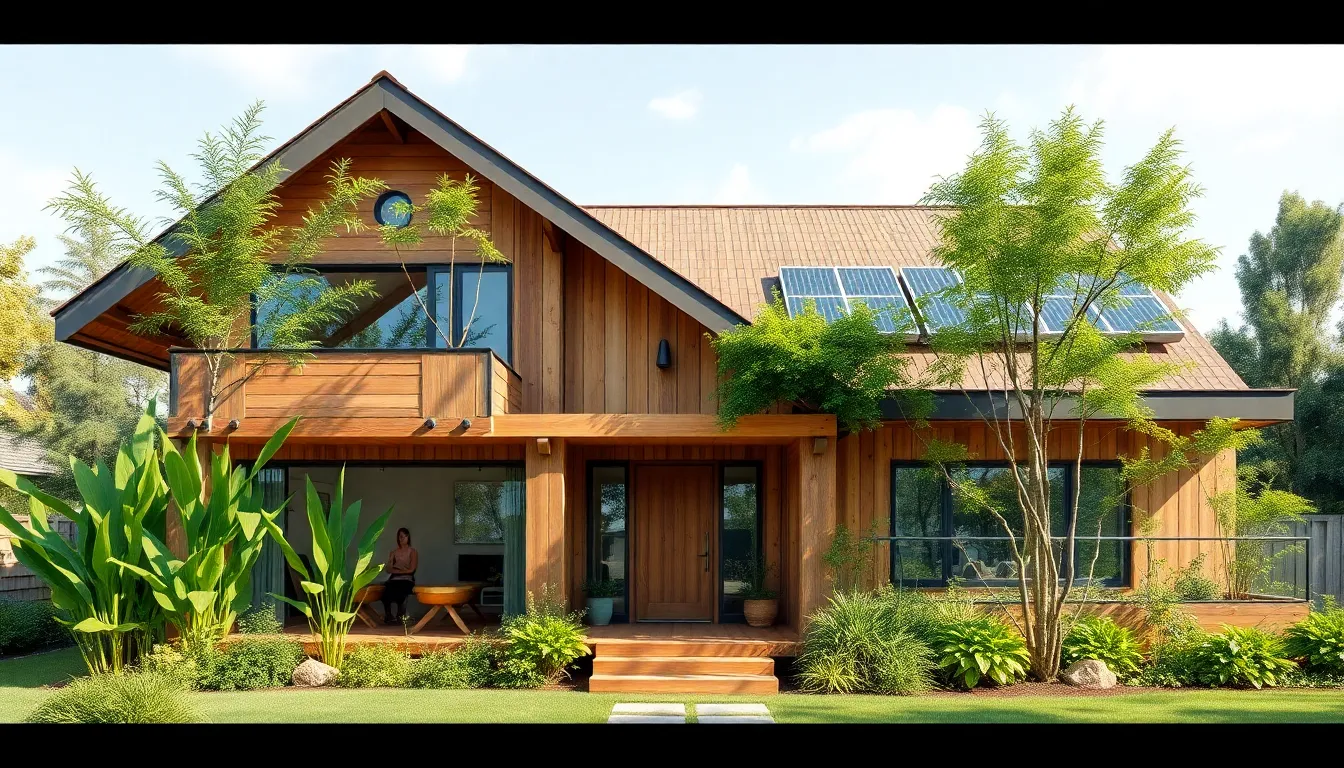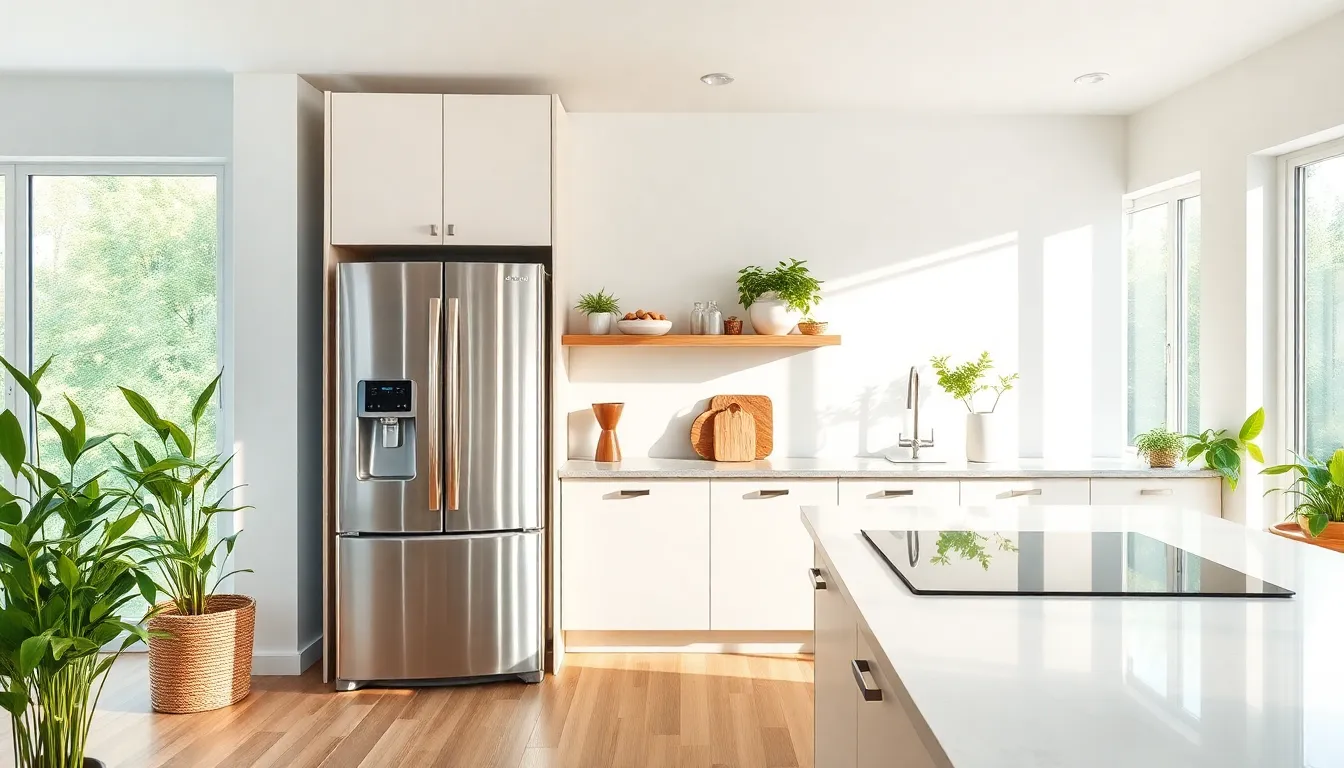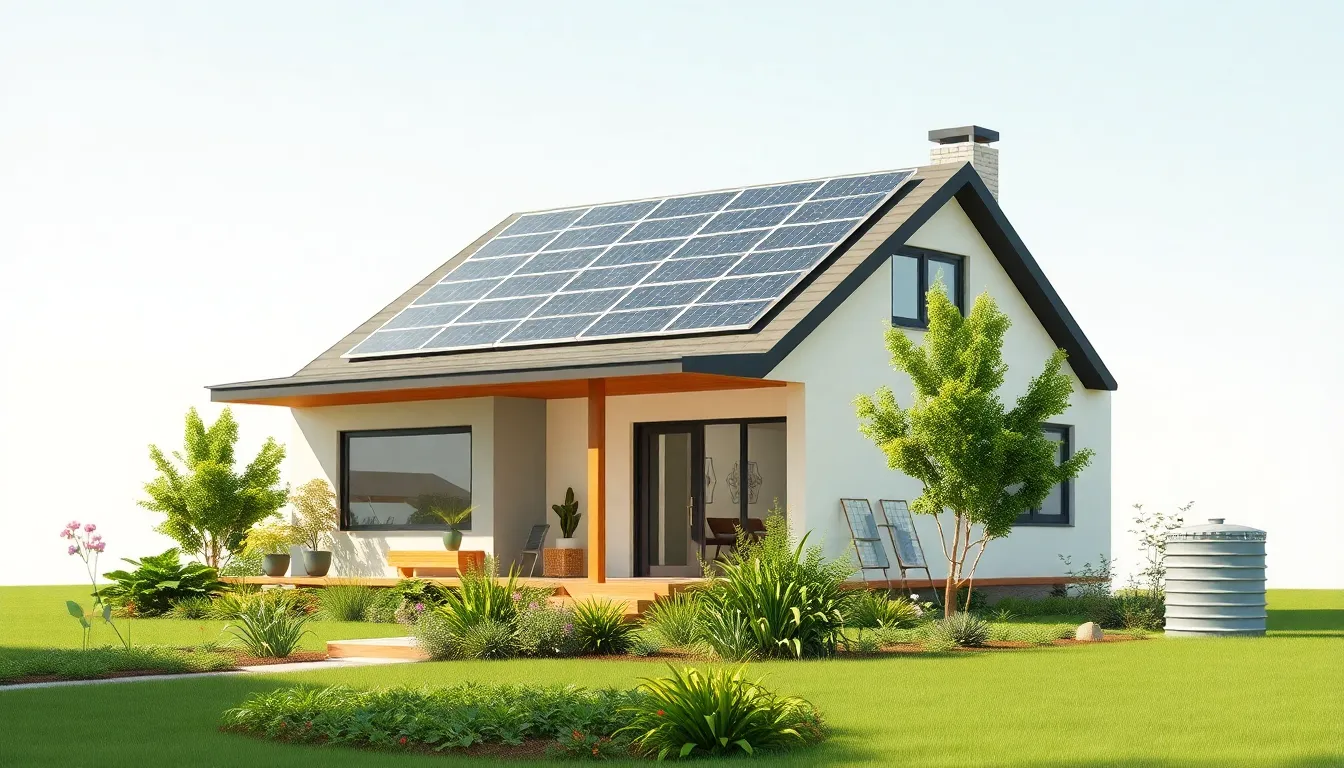In a world where the only green most people see is in their bank accounts, green homes are stepping into the spotlight. Imagine living in a house that’s not just a roof over your head but a superhero for the planet. These eco-friendly abodes are designed to save energy, reduce waste, and even make your neighbors a tad jealous. Who knew saving the Earth could be so stylish?
Picture this: solar panels glistening in the sun, rainwater systems that make Mother Nature proud, and insulation that keeps your energy bills lower than your last Netflix binge. Green homes aren’t just a trend; they’re a lifestyle choice that says, “I care about the planet and I can still rock a fabulous living space.” Let’s dive into the world of green homes and discover why they’re the ultimate blend of comfort, style, and environmental responsibility.
Table of Contents
ToggleWhat Are Green Homes?
Green homes represent eco-friendly living spaces designed to minimize environmental impact while providing comfort. These sustainable structures incorporate energy-efficient features and sustainable materials.
Definition and Features
Green homes prioritize energy efficiency and the use of sustainable materials. They often include features like solar panels for renewable energy, energy-efficient appliances, and high-performance insulation. Water-efficient fixtures reduce water waste, while smart home technology enables better energy management. Natural ventilation and daylighting improve indoor air quality and reduce reliance on artificial lighting. A focus on local and recycled materials further enhances sustainability.
Benefits of Green Homes
Green homes offer numerous advantages. Significant savings on energy bills result from reduced energy consumption. Improved indoor air quality contributes to a healthier living environment. Homeowners often benefit from higher property values due to increasing demand for environmentally friendly options. Tax incentives and rebates for energy-efficient upgrades provide additional financial advantages. Furthermore, green homes support sustainable living by promoting responsible resource use and reducing ecological footprints.
Sustainable Materials in Green Homes


Sustainable materials play a crucial role in the construction and design of green homes. These materials minimize environmental impact while enhancing aesthetics and functionality.
Eco-Friendly Building Materials
Eco-friendly building materials consist of renewable, recycled, or sustainably sourced resources. Bamboo, for instance, grows rapidly and absorbs carbon dioxide, making it an excellent choice for flooring and cabinetry. Recycled steel offers durability and requires less energy to produce than new steel, reducing carbon emissions. Additionally, reclaimed wood provides character and helps combat deforestation. Concrete made from recycled aggregates also promotes sustainability by repurposing waste. Homeowners prioritize these materials not only for their environmental benefits but also for their unique visual appeal and longevity.
Energy-Efficient Appliances
Energy-efficient appliances significantly contribute to the sustainability of green homes. They consume less electricity, leading to lower utility bills. Many energy-efficient devices, like refrigerators and washing machines, bear the ENERGY STAR label, indicating compliance with strict energy efficiency standards. Dishwashers with advanced soil sensors optimize water usage, allowing for environmentally friendly operation without sacrificing performance. Induction cooktops provide faster cooking times and greater energy efficiency compared to traditional electric ranges. By selecting these appliances, homeowners support sustainable living while enjoying modern conveniences.
The Impact of Green Homes on the Environment
Green homes significantly contribute to environmental sustainability. Their design focuses on minimizing negative impacts while enhancing overall living conditions.
Reducing Carbon Footprint
Green homes effectively reduce carbon footprints by incorporating renewable energy sources. Solar panels generate electricity, limiting reliance on fossil fuels. Energy-efficient appliances consume less power, further decreasing emissions. High-performance insulation reduces heating and cooling needs, promoting thermal comfort without excessive energy use. Additionally, water-efficient systems lower demand on municipal water supplies and energy-intensive water heating. This combination drives down greenhouse gas emissions, making a notable difference in climate change mitigation.
Conservation of Resources
Conservation of resources occurs at multiple levels within green homes. They utilize sustainable building materials like bamboo and reclaimed wood, which minimize deforestation impacts. The careful selection of these materials ensures durability and reduces waste. Water-efficient fixtures and appliances significantly lower water consumption, contributing to resource preservation. Smart home technologies aid in managing energy and water use efficiently, allowing homeowners to track consumption. By fostering responsible resource use, green homes support long-term environmental health and sustainability.
Designing a Green Home
Designing a green home involves careful consideration of both architecture and surrounding landscape. These choices significantly impact energy efficiency and environmental sustainability.
Architectural Considerations
Architectural considerations focus on maximizing natural light and ventilation. Large windows allow sunlight, reducing reliance on artificial lighting. Orientation of the home plays a crucial role; positioning it to capture prevailing winds promotes cooling without energy-intensive systems. Roof overhangs provide shade, reducing heat gain during summer months. Integrating green roofs can further enhance insulation and biodiversity. Utilization of sustainable building materials adds to both aesthetics and eco-friendliness. These features combine to create a home that harmonizes with nature while maintaining comfort and style.
Landscaping for Sustainability
Landscaping for sustainability emphasizes native plants and efficient irrigation. Choosing plants adapted to the local climate reduces water usage and maintenance needs. Rain gardens can manage stormwater runoff effectively, aiding in flood prevention. Incorporating permeable materials for walkways promotes natural drainage and minimizes erosion. Installing compost bins encourages waste reduction and enriches soil health. Creating green spaces supports local wildlife and enhances outdoor enjoyment. Through thoughtful landscaping, homeowners can contribute to a more sustainable environment while improving their property’s appeal.
The Future of Green Homes
Green homes are evolving rapidly, driven by innovation and societal demands for sustainability. Numerous features and advancements set the stage for a greener future in residential living.
Emerging Trends
Smart home technology continues to advance, enhancing energy efficiency in green homes. Home automation systems, equipped with AI, optimize energy use by monitoring consumption patterns. Modular and prefabricated construction methods are gaining popularity, reducing waste and construction time. Additionally, vertical gardens and living walls offer opportunities for urban dwellers to incorporate nature into their living spaces. Heat recovery ventilation systems are becoming standard, improving indoor air quality while conserving energy. Homebuyers now express increased interest in properties that integrate renewable resources and sustainable materials, influencing market dynamics.
Government Regulations and Incentives
Government policies increasingly encourage the adoption of green homes through various regulations and incentives. Tax credits for energy-efficient renovations provide financial relief, stimulating homeowners to invest more in sustainable upgrades. Local codes are evolving to require higher energy efficiency standards in new constructions and renovations. Incentives from utility companies often cover the costs of solar panel installations, making renewable energy more accessible. Grants for energy-efficient appliances promote responsible consumption and support green initiatives. All these measures align with national goals for reducing carbon footprints and advancing eco-friendly living.
Embracing the concept of green homes offers a pathway to a more sustainable future. These eco-friendly living spaces not only provide comfort and style but also significantly reduce environmental impact. By integrating energy-efficient technologies and sustainable materials, homeowners can enjoy lower utility bills and contribute to a healthier planet.
As innovations continue to shape the landscape of green living, the appeal of these homes will only grow. With increasing awareness and supportive policies, the shift towards sustainable housing is becoming a reality. Choosing a green home is more than just a trend; it’s a commitment to a better quality of life for both individuals and the environment.


